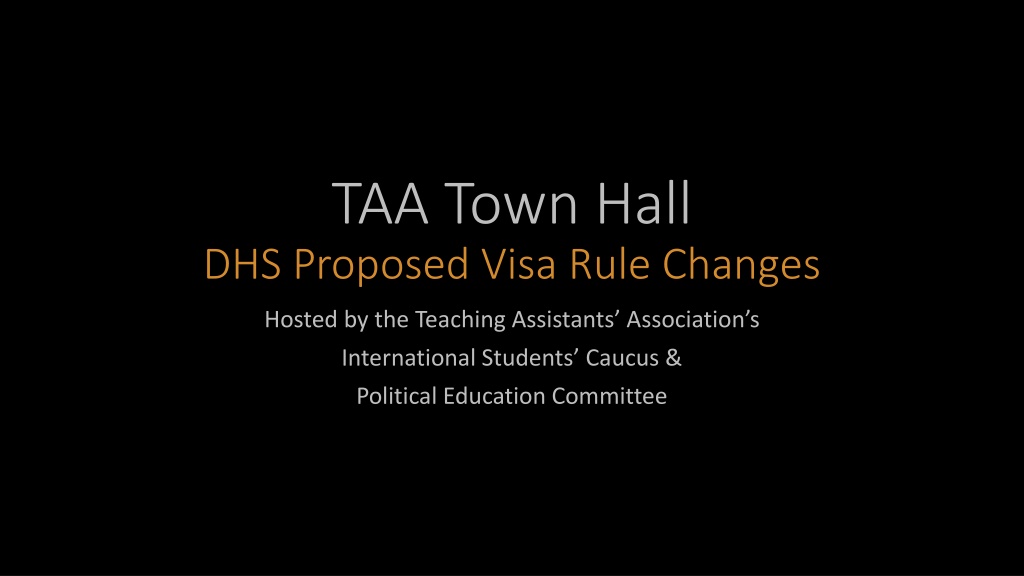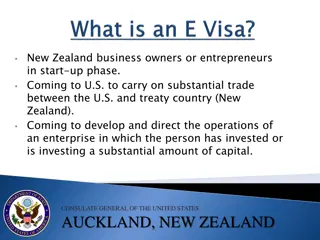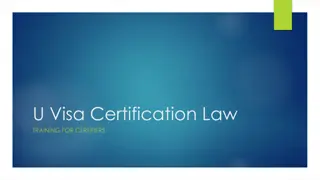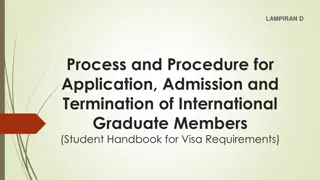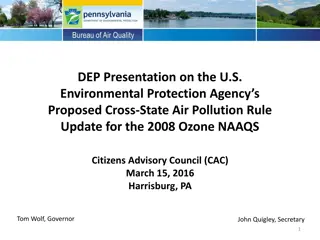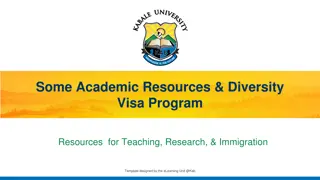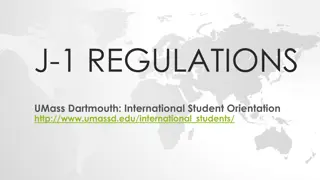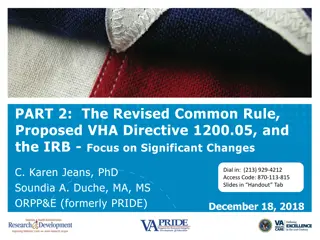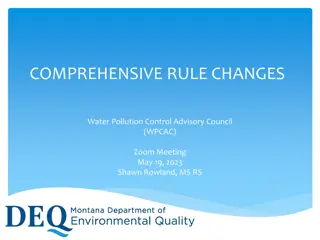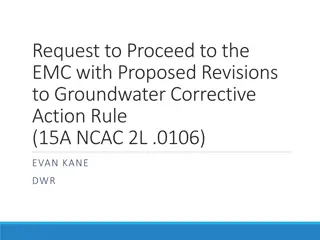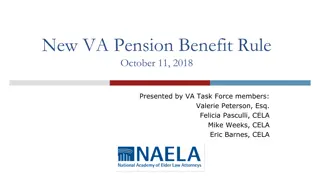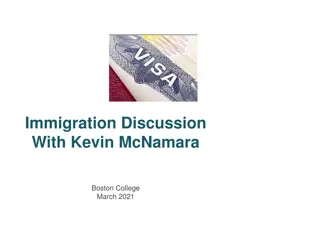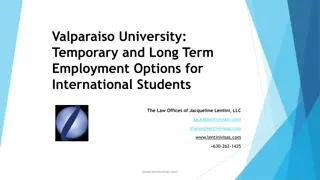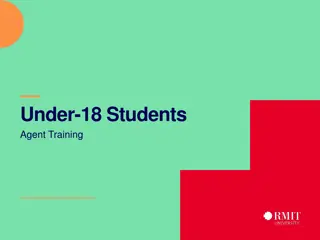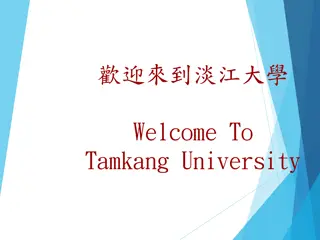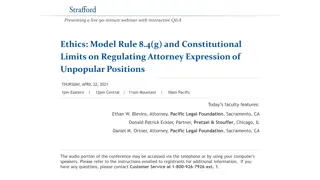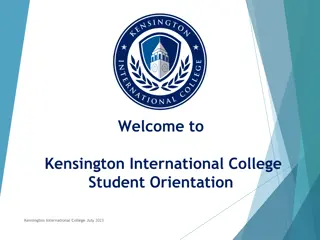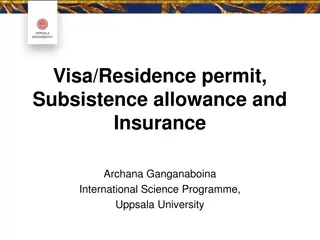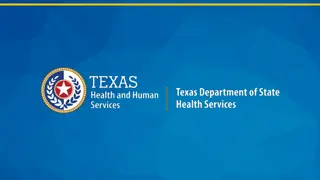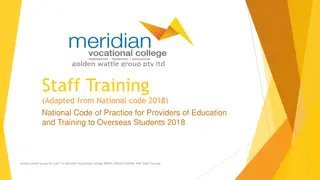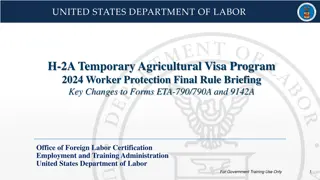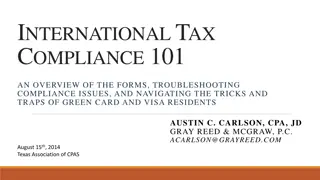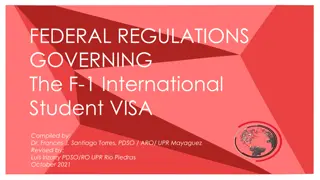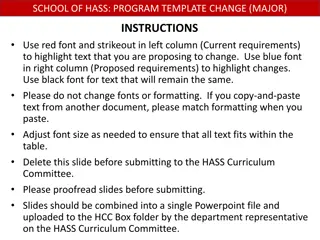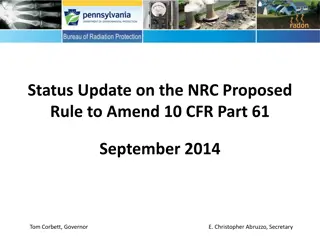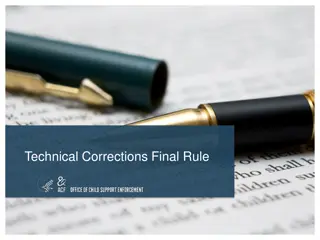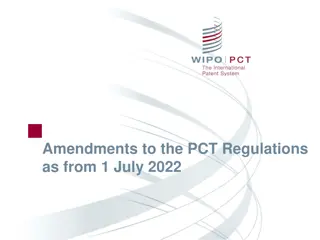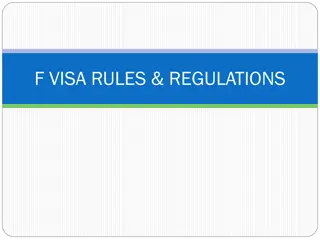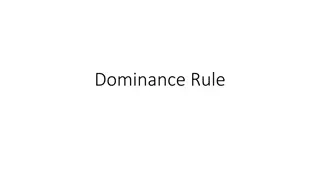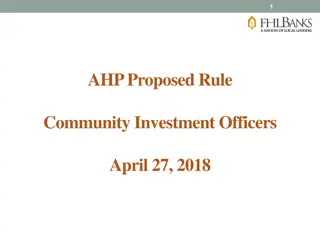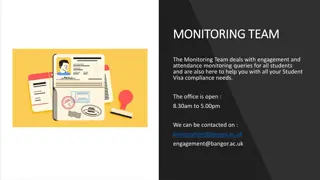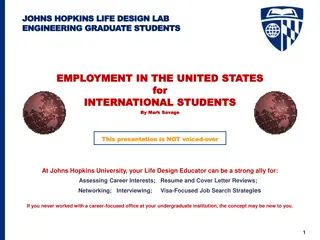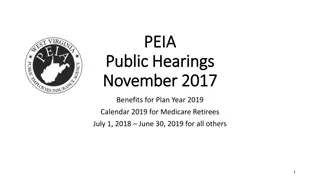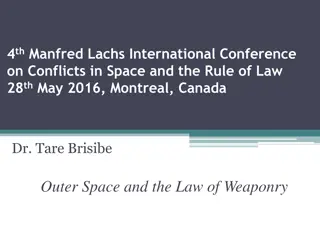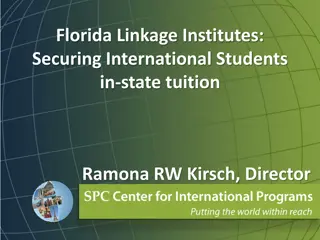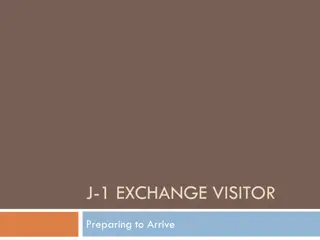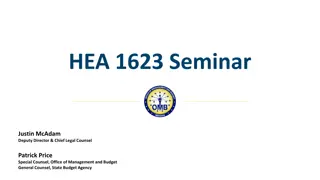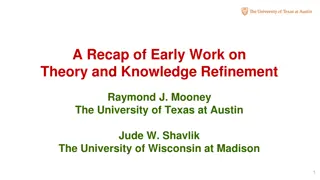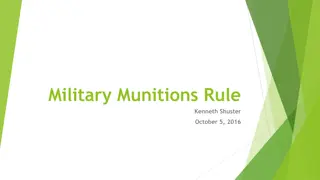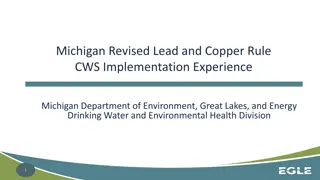Proposed Visa Rule Changes Impacting International Students: Review and Analysis
Learn about the proposed visa rule changes by the Department of Homeland Security affecting F and J nonimmigrants. The review covers date-specific admission, extension of stay mechanics, academic-related restrictions, and transition provisions. Understand the implications on admission periods, grace periods, and the process for filing extension applications. Stay informed to navigate these potential changes effectively.
Download Presentation

Please find below an Image/Link to download the presentation.
The content on the website is provided AS IS for your information and personal use only. It may not be sold, licensed, or shared on other websites without obtaining consent from the author. Download presentation by click this link. If you encounter any issues during the download, it is possible that the publisher has removed the file from their server.
E N D
Presentation Transcript
TAA Town Hall DHS Proposed Visa Rule Changes Hosted by the Teaching Assistants Association s International Students Caucus & Political Education Committee
Presentation Review of the proposed rule Date-specific admission of F and I nonimmigrants Extension of stay mechanics and standards of eligibility Transition provisions Impacting F and J nonimmigrants here now Academic-related restrictions
A Few Terms DHS = Department of Homeland Security USCIS = United States Citizenship and Immigration Services CBP = Customs and Border Patrol CFR = Code of Federal Regulations D/S = Duration of Stay OPT = Optional Practical Training
Review of the Proposed Rule Department of Homeland Security (not the Department of State) proposes to amend five sections of Title 8 of the Code of Federal Regulations (known as 8 CFR). Those sections are: 8 CFR 214.2(f) F-1 regulations 8 CFR 214.1 general regulation on requirements for admission, extension, and maintenance of status 8 CFR 214.2(i) J-1 regulations (only the DHS regulations are included in this rule change) 8 CFR 248 general change of status regulations 8 CFR 274a.12 regulations on employment verification and authorization NAFSA resources show how the rule changes would change the existing regulations (noting additions to and omissions from the existing regulations)
Date-specific admission of F and J nonimmigrants Admission to the US for a fixed period instead of duration of status. I- 94 expiration date will be: The program end date on Form I-20 or DS-2019, plus 30 days But not to exceed a 4- or 2-year maximum [next discussion point] F-1 grace period reduced to 30 days (from 60 days) The rule would not change the program period a school could put on the I-20 or DS-2019, but would limit the period of admission that CBP or USCIS would give on the F or J Form-194
Date-specific admission of F and J nonimmigrants If your program is longer than the 4- or 2-year maximum, then: File I-539 Extension of Stay application. Individuals who need time beyond the period of admission on their I-94 would have to timely file a complete extension of stay application (Form I-539 / I-539A) with USCIS before their I-94 expiration date. Must pay I-539 fee and biometric data fee ($$$) Will likely face long I-539 adjudication times If I-539 is denied and the period of authorized stay expired while the application was pending, then applicant and dependents must immediately leave the US.
2-Year Limitations People born in or citizens of a country on the State Sponsor of Terrorism List
2-Year Limitations People born in or citizens of a country on the State Sponsor of Terrorism List For now: North Korea, Iran, Sudan, and Syria
2-Year Limitations People born in or citizens of a country on the State Sponsor of Terrorism List
2-Year Limitations People born in or citizens of a country on the State Sponsor of Terrorism List People who are citizens of countries with a > 10% student overstay rate
2-Year Limitations People born in or citizens of a country on the State Sponsor of Terrorism List People who are citizens of countries with a > 10% student overstay rate For now: Afghanistan, Benin, Bhutan, Burkina Faso, Burma, Burundi, Cameroon, Cape Verde, Central African Republic, Chad, Congo-Brazzaville, Congo-Kinshasa, C te d Ivoire, Djibouti, Equatorial Guinea, Eritrea, Ethiopia, Gabon, the Gambia, Ghana, Guinea, Guinea-Bissau, Guyana, Haiti, Iraq, Kenya, Kosovo, Kyrgyzstan, Liberia, Libya, Malawi, Mali, Mauritania, Moldova, Mongolia, Nepal, Niger, Nigeria, Papua New Guinea, the Philippines, Rwanda, Samoa, Senegal, Sierra Leone, Somalia, South Sudan, Sudan, Syria, Tajikistan, Tanzania, Togo, Tonga, Turkmenistan, Tuvalu, Uganda, Uzbekistan, Vietnam, Yemen, and Zambia
Credit: Aaron Reichlin-Melnick / @ReichlinMelnick on Twitter
2-Year Limitations People born in or citizens of a country on the State Sponsor of Terrorism List People who are citizens of countries with a > 10% student overstay rate
2-Year Limitations People born in or citizens of a country on the State Sponsor of Terrorism List People who are citizens of countries with a > 10% student overstay rate School not fully participating in E-Verify
2-Year Limitations People born in or citizens of a country on the State Sponsor of Terrorism List People who are citizens of countries with a > 10% student overstay rate School not fully participating in E-Verify Programs deemed in the US national interest (eg, nuclear science)
2-Year Limitations People born in or citizens of a country on the State Sponsor of Terrorism List People who are citizens of countries with a > 10% student overstay rate School not fully participating in E-Verify Programs deemed in the US national interest (eg, nuclear science) Unaccredited post-secondary institutions (for F-1 only)
2-Year Limitations People born in or citizens of a country on the State Sponsor of Terrorism List People who are citizens of countries with a > 10% student overstay rate School not fully participating in E-Verify Programs deemed in the US national interest (eg, nuclear science) Unaccredited post-secondary institutions (for F-1 only) Language training programs
Sample scenario: Tarek is an Egyptian citizen born in Syria while his parents were working there. He applies to a 4-year program at UW Madison. Current rule: He could be admitted to the US in F-1 status for Duration of Status and upon completion file a Form I-765 to apply for OPT. Proposed rule: Since Tarek was born in Syria, he would be admitted to a 2-year admission in F-1 status. He would need to file a I-539 to complete the second 2 years of the program (and would have to pay the corresponding fees). He would then have to file an additional I- 539 with a Form I-765 to apply for OPT.
Extension of Stay Mechanics / Standards of Eligibility I-539 is the extension of stay application form. Must use if period on I-94 is insufficient: To complete current program (F-1 and J-1) For change of educational level (F-1) or matriculation (J-1) For school or program transfer (F-1 and J-1) To engage in OPT or STEM OPT (F-1 must also file I-765) or academic training (J-1)
Extension of Stay Mechanics / Standards of Eligibility Period of extension uses the same rules as period of admission: time needed to complete the program or requested practical training not to exceed 4 or 2 years Biometrics: As a part of an EOS application, USCIS requires biometric collection. All must pay the $85 biometric fee Proof of sufficient funding for F-1 students extending their stay Possibility of an interview Dependents of F-1 and J-1 nonimmigrants must also file I-539 / I- 539A for EOS and pay biometric fees
Transition Provisions F or J nonimmigrants previously admitted for D/S would be transitioned to a fixed date of admission which would be: The program end date of the Form I-20 or DS-2019 that is valid on the final rules effective date Plus an additional period of 60 days for F nonimmigrants or 30 days for J nonimmigrants Not to exceed a period of 4 years from the final rule s effective date (EVEN IF you are in a 2-year category)
Transition Provisions Travel and reentry after the final rule effective date An F or J nonimmigrant who departs the US and seeks admission after the final rule s effective date becomes subject to the fixed date framework
Transition Provisions OPT and STEM OPT F-1 applicants for OPT or STEM OPT whose I-765 is pending with USCIS on the final rule effective date could remain in US while the application is pending (would not have to refile) If USCIS approves the OPT, the F-1 could remain in F status until the expiration date of the OPT plus 60 days If USCIS denies the OPT If the student s program end date has not yet passed, student could remain in the US until the program end date listed on their Form I-20 plus 60 days If the program end date and the 60-day grace period has passed, then the student and dependents must leave the US
Academic Restrictions Lifetime limit on extension of stay to pursue new F-1 programs at the same educational level (can change 2 times) Lifetime limit on extension of stay to pursue reverse matriculation by F-1 student (can do so 1 time) Standards for USCIS to approve F-1 extension of stay: Compelling academic reasons A documented illness or medical condition Exceptional circumstances beyond the control of the nonimmigrant
